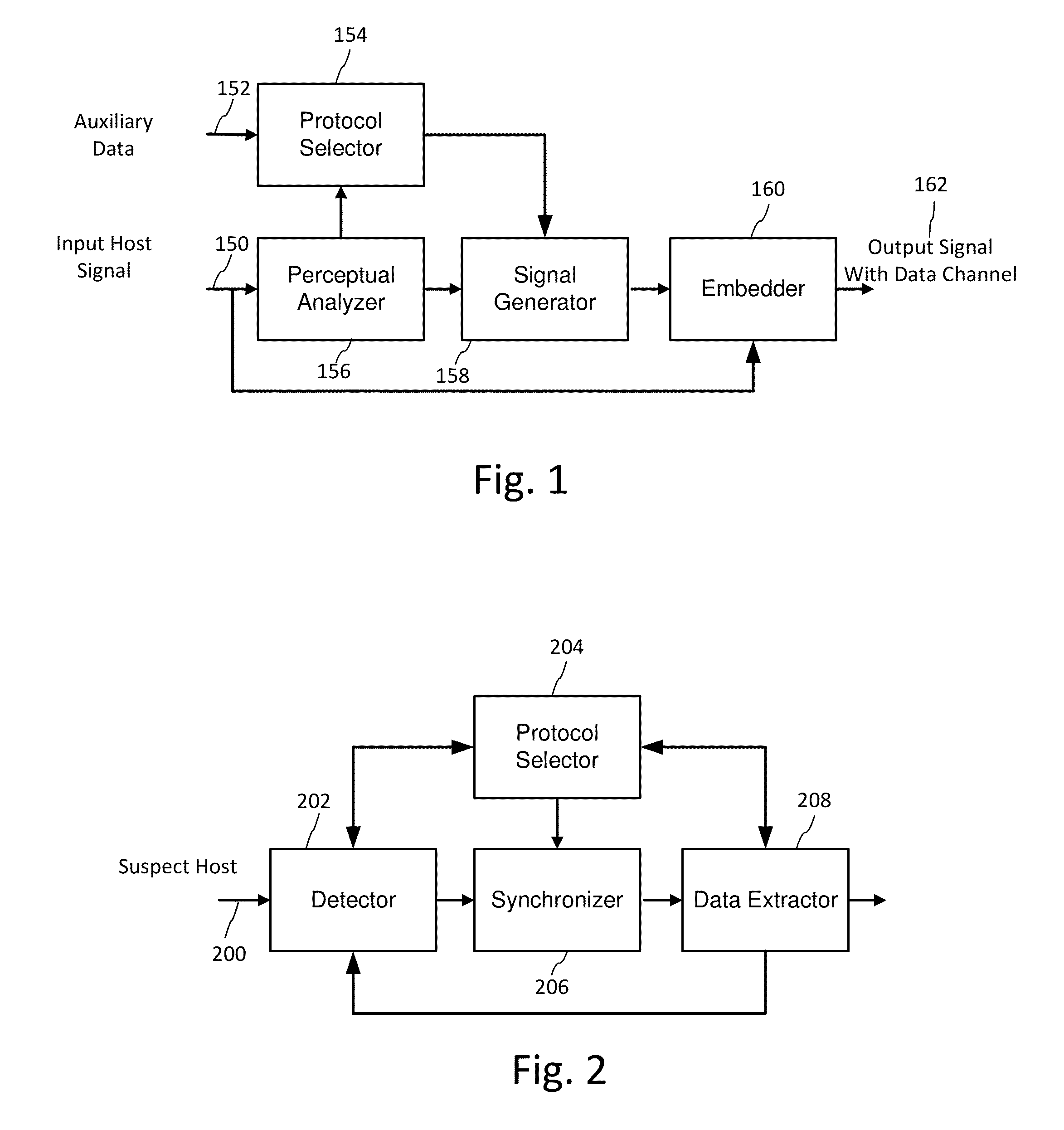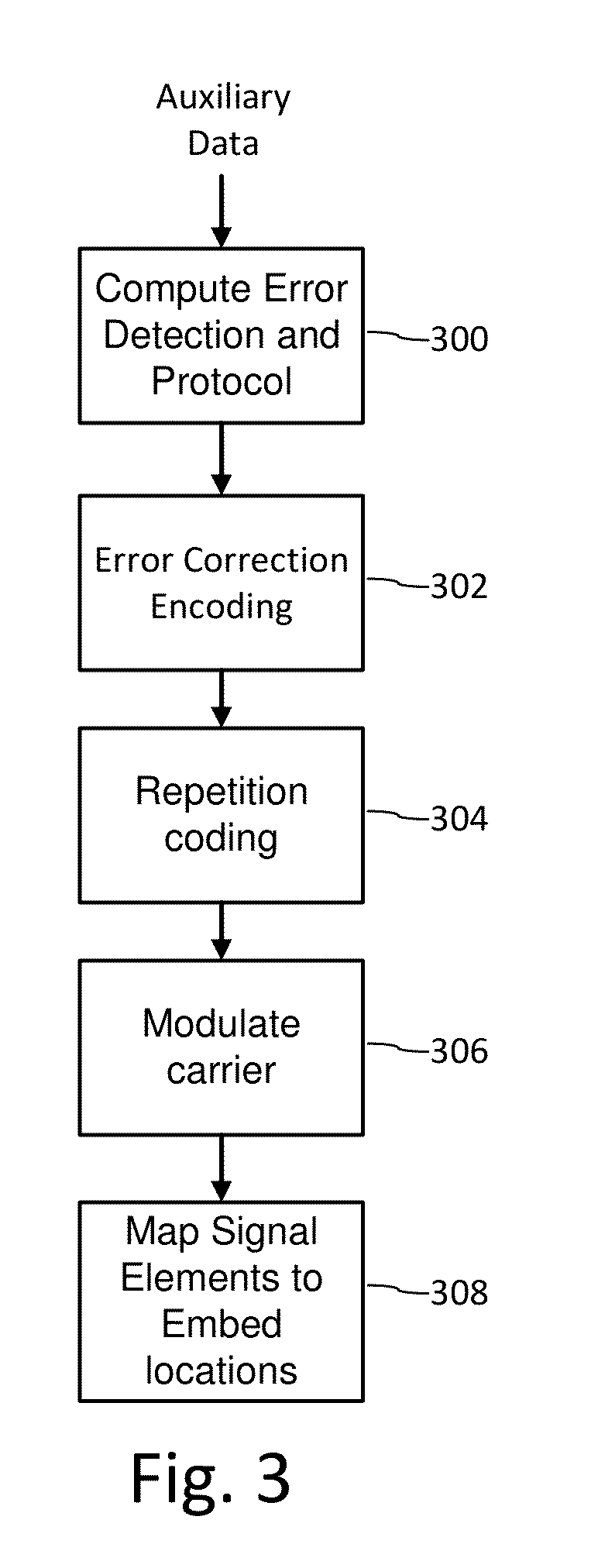Digital watermarking and data hiding with narrow-band absorption materials
a technology of narrow band absorption materials and digital watermarking, applied in the field ofsignal communication, can solve the problems of limiting the ability to find and read code, increasing the cost of scanners, slowing down code reading, etc., and achieves the effect of facilitating the synchronization function of the sparse signal, facilitating detection and synchronization, and efficiently decoding signals
- Summary
- Abstract
- Description
- Claims
- Application Information
AI Technical Summary
Benefits of technology
Problems solved by technology
Method used
Image
Examples
Embodiment Construction
[0057]FIG. 1 is a block diagram of a signal encoder for encoding a sparse signal. FIG. 2 is a block diagram of a compatible signal decoder for extracting a payload from a sparse signal encoded on an object or within an image displayed on a video display.
[0058]Encoding and decoding is typically applied digitally, yet the signal is expected to survive digital to analog transformation and analog to digital transformation. For example, the encoder generates an image including the sparse signal that is converted to a rendered form, such as a printed image, displayed image or video. We use the term “printing” to encompass a wide variety of marking technologies, including engraving, etching, stamping, etc. as there are a variety of ways to impart the image carrying the sparse signal to an object. Prior to decoding, a receiving device captures an image or stream of images of the object through its image sensor such as a camera (e.g., CMOS or CCD), and converts it t...
PUM
 Login to View More
Login to View More Abstract
Description
Claims
Application Information
 Login to View More
Login to View More - R&D
- Intellectual Property
- Life Sciences
- Materials
- Tech Scout
- Unparalleled Data Quality
- Higher Quality Content
- 60% Fewer Hallucinations
Browse by: Latest US Patents, China's latest patents, Technical Efficacy Thesaurus, Application Domain, Technology Topic, Popular Technical Reports.
© 2025 PatSnap. All rights reserved.Legal|Privacy policy|Modern Slavery Act Transparency Statement|Sitemap|About US| Contact US: help@patsnap.com



